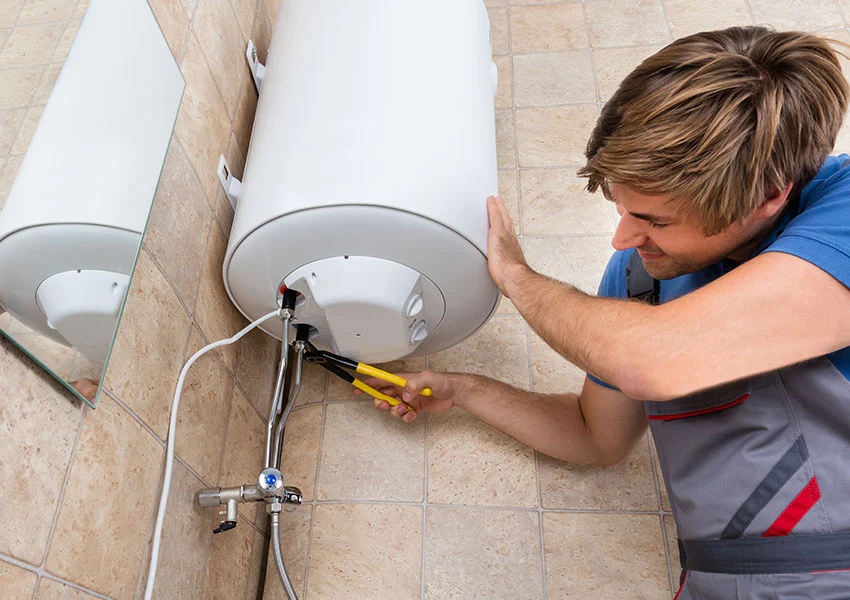Making Sure Durability of Your Home's Hot Water System: Maintenance Advice
Making Sure Durability of Your Home's Hot Water System: Maintenance Advice
Blog Article
Just about everyone has their unique theory with regards to How to Maintain Your Water Heater & Prolong its Life.

Hot water is important for everyday convenience, whether it's for a refreshing shower or cleaning dishes. To ensure your warm water system runs successfully and lasts much longer, regular maintenance is essential. This post gives practical suggestions and understandings on just how to keep your home's warm water system to avoid disruptions and expensive repair services.
Intro
Keeping your home's hot water system might seem difficult, but with a few easy actions, you can guarantee it runs efficiently for several years ahead. This overview covers everything from understanding your hot water system to DIY maintenance tips and knowing when to hire expert assistance.
Value of Preserving Your Warm Water System
Routine maintenance not only prolongs the life expectancy of your hot water system however also ensures it operates efficiently. Neglecting maintenance can lead to decreased performance, greater power costs, and also premature failure of the system.
Signs Your Hot Water System Needs Upkeep
Recognizing when your warm water system requires interest can avoid major issues. Look out for indicators such as irregular water temperature level, odd noises from the heater, or rusty water.
Purging the Hot Water Heater
Purging your water heater removes sediment build-up, enhancing performance and lengthening its life.
Monitoring and Replacing Anode Rods
Anode rods avoid corrosion inside the container. Inspecting and replacing them when broken is vital.
Complex Issues Calling For Expert Help
Instances include significant leaks, electric issues, or if your hot water heater is regularly underperforming.
Routine Expert Upkeep Advantages
Professional upkeep can include thorough assessments, tune-ups, and guaranteeing conformity with safety and security requirements.
Examining and Changing Temperature Setups
Changing the temperature setups guarantees optimum efficiency and safety.
Do It Yourself Tips for Maintenance
You can execute a number of maintenance jobs yourself to maintain your hot water system in leading condition.
Looking for Leaks
Regularly check pipes and links for leaks, as these can bring about water damage and greater bills.
Recognizing Your Hot Water System
Prior to diving into upkeep tasks, it's practical to understand the standard components of your warm water system. Generally, this consists of the water heater itself, pipelines, anode poles, and temperature controls.
Month-to-month Upkeep Tasks
Routine month-to-month checks can help capture minor problems prior to they escalate.
Examining Pressure Alleviation Valves
Examining the pressure safety valve ensures it works appropriately and prevents extreme stress buildup.
Protecting Pipelines
Insulating hot water pipelines reduces warm loss and can conserve energy.
When to Call an Expert
While do it yourself upkeep is advantageous, some concerns require expert experience.
Conclusion
Routine upkeep of your home's warm water system is important for effectiveness, long life, and cost savings. By complying with these pointers and knowing when to seek expert aid, you can make certain a dependable supply of hot water without unforeseen disturbances.
How to Maintain an Instant Hot Water Heater
Before tinkering with your hot water heater, make sure that it’s not powered on. You also have to turn off the main circuit breaker and shut off the main gas line to prevent accidents. Also turn off the water valves connected to your unit to prevent water from flowing into and out of the appliance. 2. When you’re done, you have to detach the purge valves’ caps. These look like the letter “T†and are situated on either side of the water valves. Doing so will release any pressure that has accumulated inside the valves while at the same time avoid hot water from shooting out and burning your skin. 3. When the purge valves’ caps are removed, you have to connect your hosing lines to the valves. Your unit should have come with three hoses but if it didn’t, you can purchase these things from any hardware or home repair shops. You can also get them from retail stores that sell water heating systems. Read the user’s manual and follow it to complete this task properly. When the hosing lines are connected, open the purge port’s valves. 4. You should never use harsh chemical cleaners or solutions when cleaning your unit. Make use of white vinegar instead. It should be undiluted and you’ll probably use about 2 gallons. 5. Now flush your water heater. This task should probably take about 40 minutes. We can’t give you specific directions for this because the procedure is carried out depending on the type, model and brand of your heater. With that being said, refer to the user’s manual. 6. When you’re done draining the unit, you have to turn off the purge port valves again. Remove the hosing lines that you earlier installed on each of the water valves. Put the valve caps (purge port) back in their respective places and be very careful so as not to damage the rubber discs that are found inside these caps. 7. Now that everything’s back in place, check your user’s manual again to find out how to reactivate your water heating system. 8. Once it is working, turn one of your hot water faucets on just to let air pass through the heater’s water supply pipes. Leave the tap on until water flows smoothly out of it. https://www.orrplumbing.com/blog/2014/september/how-to-maintain-an-instant-hot-water-heater/

As a keen person who reads about Tips on Maintaining a Water Heater, I think sharing that excerpt was really helpful. Those who enjoyed reading our blog entry if you please remember to share it. I praise you for being here. Revisit us soon.
Order Repair Report this page